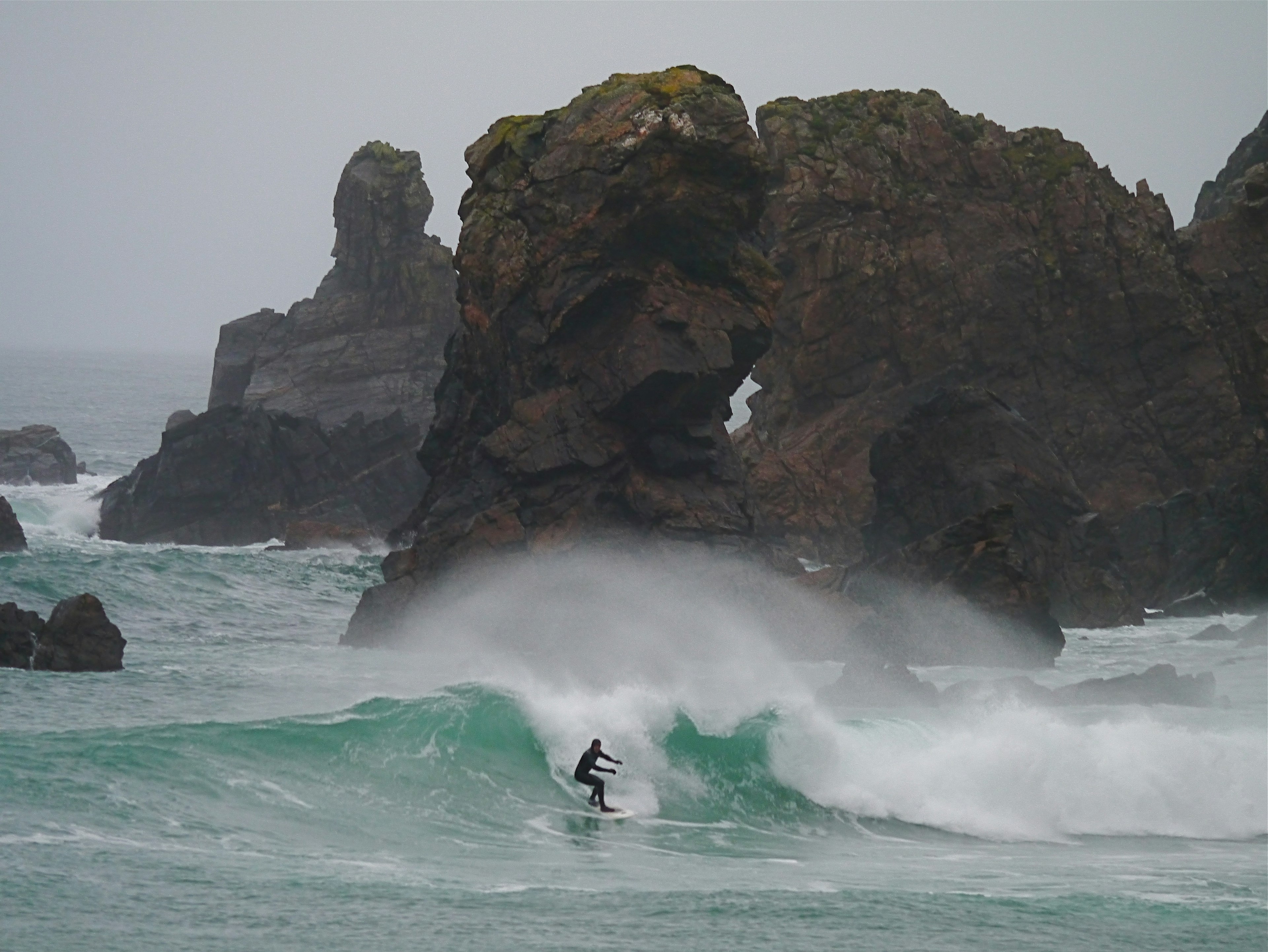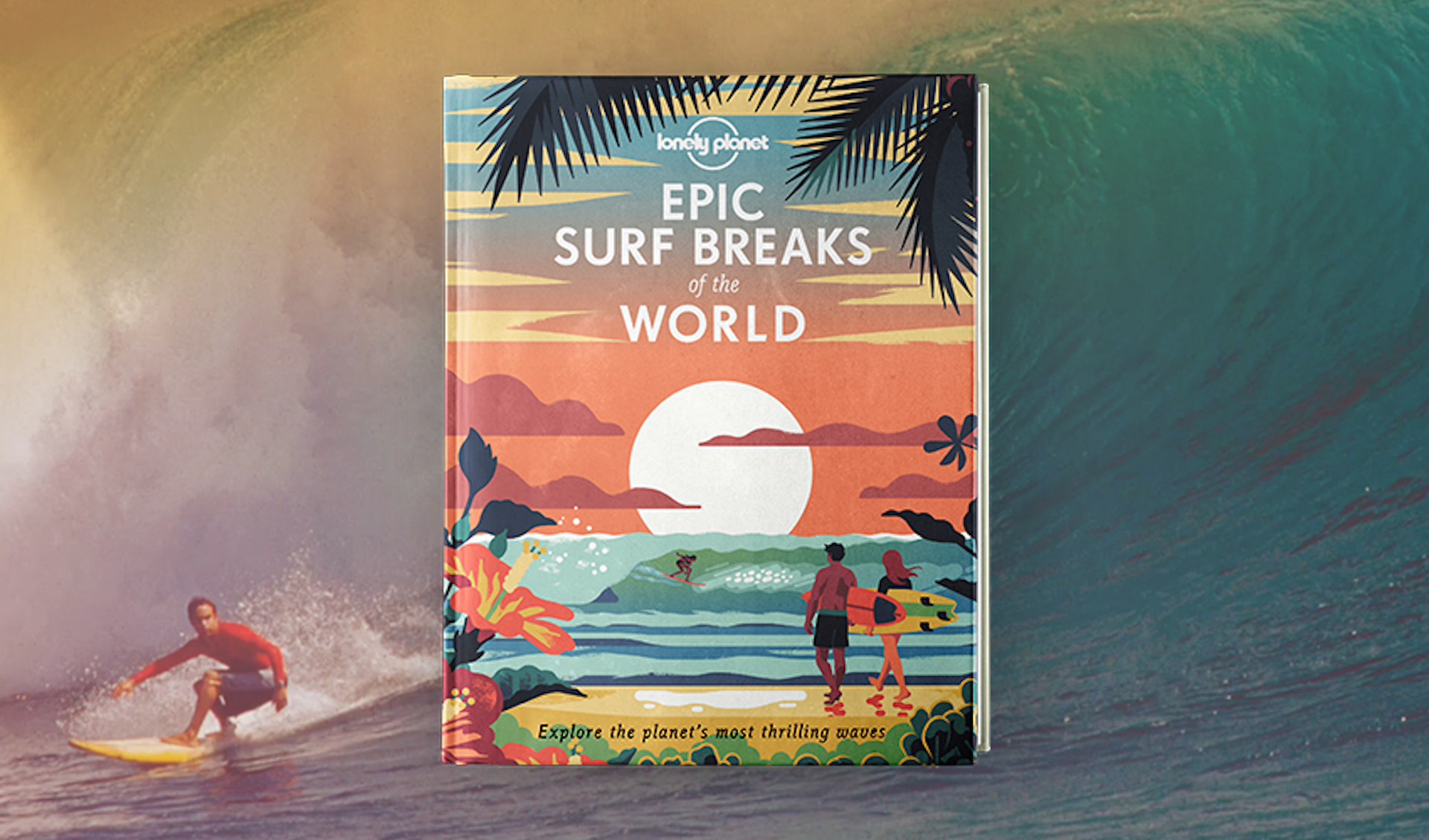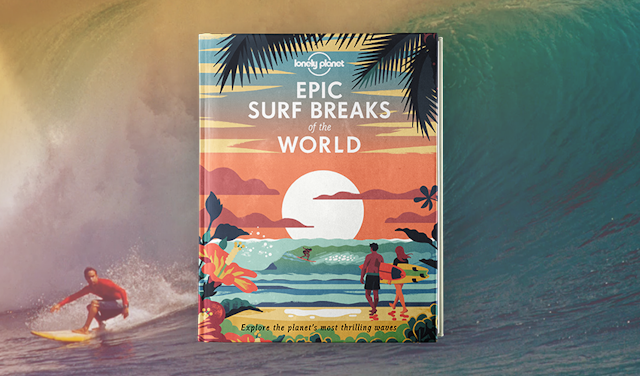Many would say that when it comes to surfing, we live in a post-exploration era in which even the most remote, difficult-to-get to breaks hold at least whispers of others having visited before you.
And while some surfers mourn this loss of discovery, many more are celebrating the very compelling upside: more waves. The truth is that surfing is more democratic than ever. There may be less in the way of surf discovery, but we are in a golden era for surf travel.
In Lonely Planet's handy book, Epic Surf Breaks of the World, professional surfers, photographers and surf writers share what makes these top nine European surfing spots so special to them.
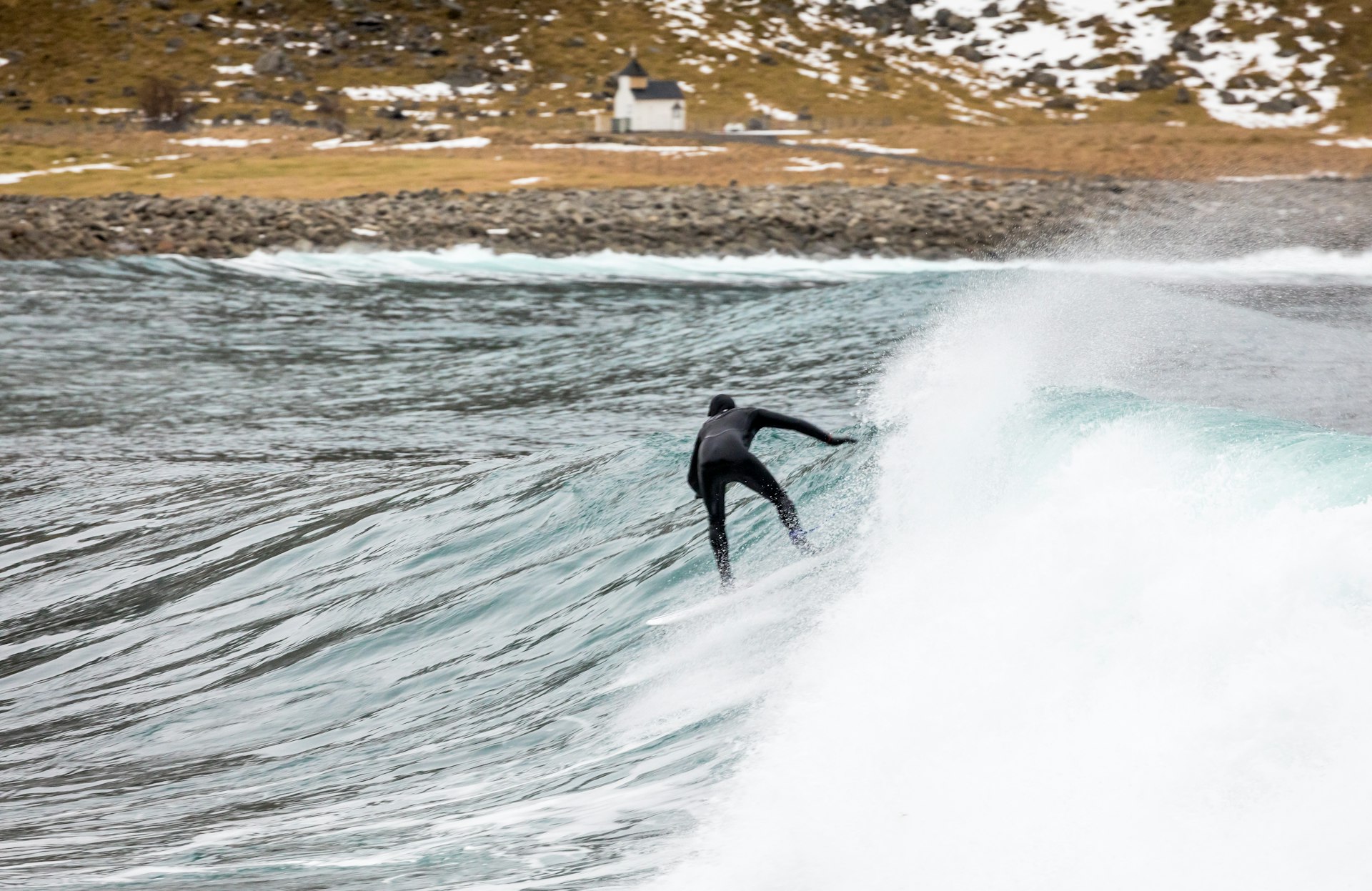
Unstad Bay, Norway
Some surfers seek out bigger swells to test themselves. Surf photographer Chris Burkard preferred to journey beyond the Arctic Circle to the north of Norway.
"My body screamed in pain as hot water from the shower rained down on me. I was trying desperately to get the feeling back in my hands. I later learned that re-warming is a slow process, and trying to speed that up can cause serious nerve damage. It is perhaps the most valuable thing I learned on that first trip – I have been back here three times since, and am almost always on the verge of frostbite when I visit.
"Sitting out in the water there, I feel a deep sensation of just how small I am within nature. There’s so much beauty in the Lofotens, but there’s also mystery. These old rocks with their tiny, craggy bays, complex fjords and idyllic towns have hidden and protected some of the world’s hardiest men, women and children for the last couple of thousand years.
"Here, a 6mm wetsuit isn’t much different than Viking battle armor. Because let’s be honest, when you enter that water in Unstad Bay, you are going to war."
Type of wave: Beach break, left and right point break.
Things to know: The average water temperature is around 12°F (-11°C) toward the end of summer, and 6°F (-14°C) in April. You’ll need a thick hooded wetsuit, boots and gloves (a 6/5mm in April). Between November and February, there is little daylight, but between mid-April and August you can surf almost 24/7.
Where to find myth and legend in Norway's wildest landscapes
Thurso, Scotland
For British surf photographer Al Mackinnon, the barrels of Thurso, Scotland, were as elusive as Nessie. But since he first spotted them, he’s known exactly where – and when – to look.
"A year or two later, I made the drive once again. This time things were markedly different. The first thing I noticed was that the bay was dead calm, like a millpond. I thought I’d been hoaxed once again. Then I noticed a bloke unsheathing a 7ft pintail made for riding big tubes, and another bloke waxing up a semi-gun.
"The water at Holborn Head, the point behind Thurso where swells pass before arriving at the reef, turned dark. Soon there were lines discernible inside the bay. Then, an immaculately groomed set arrived, thick and moving at formidable speed. Each swell hit the reef and thundered down the line with incredible precision and ferocity. It was double overhead and, yes, barrelling all the way with thick, serrated lips.
"That set and the ensuing two days of swell changed the course of my life. I may have already been on a trajectory toward melding my two greatest passions – waves and photography – but it was the perfection I witnessed at Thurso East that sealed the deal."
Type of wave: Right reef break.
Things to know: Surfing in Scotland has boomed in recent years, so don’t expect to have its premiere wave all to yourself. However, there is a plethora of waves around, some of them completely devoid of crowds.
Scotland’s 8 best hiking trails

La Gravière, France
Brendan Buckley visited Biarritz in France for crepes and café au lait. But after sampling Hossegor’s famous pounding beach break, he decided to move there for good.
"Hossegor is the epicenter of wave riding on the European continent, hosting the entire spectrum of surfers: long-haired longboarders with groovy vans; performance-obsessed short boarders, who do jumping jacks in spring suits; old men who shred; little girls who shred. While Biarritz – the larger, more famous city, some 40 minutes to the south – also has some great surf, it doesn’t get the world-class waves of Hossegor.
"All kinds of surfers make a pilgrimage to La Gravière, either to paddle out and take on the notoriously fast, barrelling beach break, or just to stare out at the bombs as they detonate so close to the sand it’s hard to imagine getting a few turns in. You’ve probably heard so much about ‘La Grav’ that you feel like you’ve seen it or surfed it even if you’ve never been to France. It’s a wave that surfers gravitate toward, regardless of what the reports tell them."
Type of wave: Barrelling beach break with rights and lefts.
Things to know: There’s a cliché about the waves in France: if you check the surf and it’s firing, you’re already too late. And it’s true. Tides are massive here and they can turn a wave on and off within an hour. Keep your options open and never be too stubborn to paddle down the beach.
The 9 best beaches in France – sands so sweet they should come with a health warning
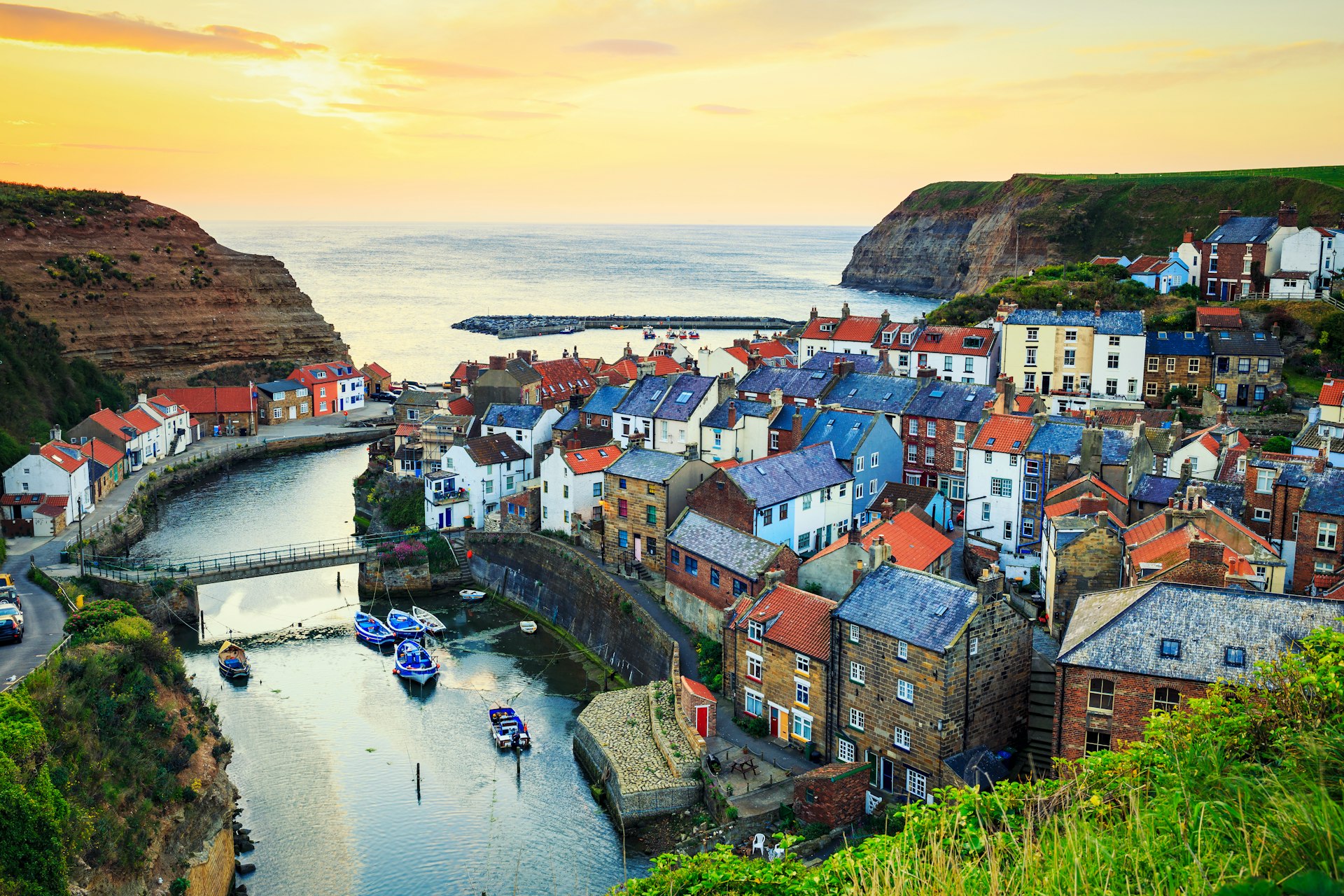
Staithes, England
Alf Alderson likes the fact that England’s best reef break is a little too far north for the masses. But as one of the UK’s greatest hits, most surfers eventually make the trip.
"These days, surfers come from all over the UK for the three fast, powerful reef breaks that rear up here from the murky waters of the North Sea. Northerly groundswells that may well have traveled all the way from the Arctic grind ashore in Staithes after being funneled down and diverted shorewards. Occasionally, those waves then encounter prevailing offshore winds. And, presto, Staithes starts firing.
"Most of my trips to Staithes unfold under a backdrop of sea and sky, blended in a grey-brown wash, an atmosphere where the thrill of anticipation is tempered by the somber scenery and the chilly waters. Regardless of the weather, something funny happens when a great wave comes along. Taking off on one of the bowly lefts that mark The Cove, feeling that weightless drop before hooning along the face and seeing the lip of a barrel unfurl in front of me, I feel
like I could be in Portugal."
Type of wave: Left-hand reef breaks on shallow reefs.
Things to know: The ideal equipment is a high-performance shortboard, or a semi-gun for bigger days. A minimum 5/4 mm wetsuit, or thicker for winter, is recommended, as are booties and a hood.
Nazaré, Portugal
The sea has provided for the people of Nazaré, Portugal, for centuries, and the tradition continues with Big Wave tourism. Portuguese photographer Ricardo Bravo has witnessed this evolution.
"In general, the beaches around here are considered to be best avoided. Most families from Nazaré make their living from fishing, and many have lost someone to these wild seas. Nazaré’s main village beach, Praia da Vila, was already considered extremely dangerous. Further north, Praia do Norte, where the swell often triples in size and power, seemed like a piece of hell on earth.
"And as much as I admire those who come to ride Praia do Norte, it’s the ocean and its magnificent shapes that leave me awestruck every time I witness it break. In my years of traveling the world, I’ve never seen anything remotely similar to the waves of Nazaré: they are powerful, raw, unpredictable and frightening. Even if surfers manage to ride them for brief moments of glory, these giants will always be indomitable."
Type of wave: Right- and left-hand beach break, anything from 3ft to 50ft-plus.
Things to know: Nazaré has become one of the most famous big-wave surf spots in the world, and the best one for spectators. Even if you’ll never surf it, watching the show from the headland affords a rare view of big-wave surfing, and it’s worth the trip for spectating alone.
Why the Azores are Europe's secret islands of adventure

The Peak, Ireland
Ireland’s entire coastline is rich with rideable waves. Alf Alderson heads to Bundoran, where an unlikely but iconic surf town has sprung up beside some of the best swells in Europe.
"Every time I surf in Ireland, and Bundoran in particular, it’s about far more than simply riding waves. The area’s wild, romantic landscape and rich culture are almost the polar opposite of the backdrop we’re used to on surf trips. My own visits to Bundoran also tend to include a trudge up the lower slopes of the 1500ft Benbulbin, which rises
like a fantastical monolith above the town. Looking around, it’s easy to see how the strange, melancholy atmosphere here has fuelled the country’s artists and poets over centuries.
"From atop the hill, I stared out at the coastline of Sligo and Donegal, once again daydreaming about all the surf here. Ireland’s outline twists and turns like a scalded snake, and any surfer can immediately see how the country has some of the best and most varied waves in Europe. Flat days are rare here. I’ve always managed to find a wave, every visit, whether mellow rollers beyond the golden sands of Tullan Strand or challenging, head-high A-frames at my favorite spot, The Peak."
Type of wave: Left-hand reef break.
Things to know: A car is essential to make the most of the range of breaks here. Bring equipment for cold-water waves that range in size from knee-high to triple overhead.
10 of the best beaches in Ireland

Mundaka, Spain
Some say Mundaka is Basque for "fickle". After years of visiting northern Spain, hoping for conditions to cooperate, Jake Howard finally scored.
"For three years I’d been chasing Mundaka, and I still hadn’t had a proper surf here. Coming to town to cover the Billabong Pro, several times, I had yet to see the wave do its thing. Sure, a lot of world-class breaks are fickle – and that’s what makes many of them so magical – but Mundaka is beyond unpredictable. Because of the way it’s protected from the raw energy of the Atlantic, it requires a very specific swell angle. And that is precisely why so many surfers chase it. When it turns on, it’s a freight-train, top-to-bottom left-hand barrel that requires commitment. However, before any of that, the wave simply requires patience.
"I was only in the water a few minutes before a large, rolling set came steaming through in the early dawn light. A few silhouetted figures splashed around me like jumping fish. I dodged the first two waves, perhaps not quite ready. But the third wave that came my way was the one.
"I was up. Anxiety washed away, replaced by the thrill of flying down the line. The waves were indeed serious, and the session required my full attention. But Mundaka had finally let me in."
Type of wave: Left-hand, sand-bottom point break.
Things to know: Staying in position in the lineup is challenging. Enter through the harbor to insert yourself directly into the lineup. Once in unprotected waters, it’s like stepping onto an aquatic treadmill.
Trail magic happens all the time on Spain's best hikes

Sennen Cove, England
In the UK’s far west, Alex Wade found a home in a place where the landscape is raw and you never know who – or what – you might encounter in the lineup.
"A 3ft green-blue wall heads straight for me. I take off, and just as I look along the face, there’s an explosive burst of grey, blue and silver, angling down the wave. It’s a dolphin, surfing the same wave. I trim to the left, standing, watching the dolphin ahead of me, letting the wave carry us both and wishing that this moment would last forever.
"In 35 years of surfing, the best oceanic experiences of my life have happened in easy reach of my home in Cornwall. Sennen Cove is the mainland UK’s most westerly beach, a wild and magical place, pummelled by swell all year and with a setup that’s perfect for all types of surfers."
Type of wave: Beach break.
Things to know: As with all beach breaks, the rips will be strong on big days. Don’t try and park in the cove in the summer – it’ll be rammed. Instead, park in the field above the cove and walk down to the beach.
The 8 best hikes through England's beautiful countryside

Supertubos, Portugal
Portugal’s heavy and unforgiving beach break is not the place to make mistakes. Stuart Butler found out the hard way.
"The next wave was a little larger and angled slightly more to the north – it was heading straight for me. I turned, made two or three easy paddle strokes until I felt the wave pick me up. I dropped in and made one easy bottom turn as the wave stood tall. In front of me, the lip pitched – a rare invitation into the tube. Once on it, it was a surprisingly simple wave to ride. I don’t remember having to do anything but lean into it and enjoy the moment. Eventually, I was blasted cleanly out onto the shoulder. A smile wrapped around my face.
"But as I turned to paddle back out, Supertubos was there to collect on what it had just given me. A new set came crashing down on top of me, ripping the board out of my hands. Then, I felt the familiar tug on my ankle. I had, once again, snapped my leash. No wonder the surf shops in Peniche are thriving."
Type of wave: Beach break, where the lefts tend to be better than the rights.
Things to know: Supertubos might be a beach break, but don’t underestimate how heavy it can get. Perfect conditions are not that common; closeouts are. Bring spare leashes. When it’s good, expect heavy crowds – and a talented local crew, who ensure they get the pick of the waves.
